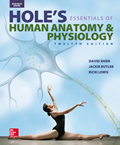1 A) the ventricles receive 70% of the blood from the atria passively during ventricular diastole B) the aortic valve closes when left ventricular pressure falls below aortic pressure C) there is a point where the atrioventricular and semilunar valves are open at the same time D) the atria and ventricles are both in diastole for a brief period of the cardiac cycle 2 A) blood entering the atria in large volumes B) closing of heart valves C) contraction of the myocardium D) changes in the blood flow rate through the chambers of the heart 3 A) smooth muscle B) a functional syncytium C) the sinoatrial node D) the cardiac conduction system 4 A) sinoatrial node B) atrioventricular node C) Purkinje fibers D) Bundle of His (AV Bundle) 5 A) SA node, AV node, Purkinje fibers, AV bundle, Bundle branches B) AV node, Bundle branches, SA node, AV bundle, Purkinje fibers C) AV bundle, Purkinje fibers, Bundle branches, AV node, SA node D) SA node, AV node, AV bundle, Bundle branches, Purkinje fibers 6 A) atrial depolarization B) atrial contraction C) atrial repolarization D) impulse transmission at the AV node 7 A) PR interval B) S wave C) R wave D) T wave 8 A) calcium and potassium B) potassium and bicarbonate C) calcium and chloride D) sodium and chloride 9 A) endothelial tissue B) myocardium C) smooth muscle and elastic connective tissue D) fibrous connective tissue 10 A) arteriole B) artery C) capillary D) venule 11 A) constriction and dilation of capillaries B) arterioles C) the amount of extracellular tissue D) precapillary sphincters 12 A) scars B) plaques C) stents D) tumors 13 A) osmotic pressure B) hydrostatic pressure C) a vacuum D) filtration 14 A) it contains less fibrous connective tissue B) it contains less smooth muscle C) it is thicker in veins D) it contains some striated muscle 15 A) lowest pressure in the arteries when the heart is relaxed B) highest pressure in the arteries, which occurs during contraction of the heart C) pressure that forces fluid out of the capillaries into the tissue D) pressure generated in each atrium during contraction 16 A) a decrease in arteriole diameter B) a decrease in stroke volume C) increased parasympathetic activity D) severe bleeding 17 A) interventricular septum B) conduction system C) muscle fibers D) heart valves 18 A) brachiocephalic B) subclavian C) internal carotid D) external carotid 19 A) pulmonary arteries B) pulmonary veins C) coronary sinus D) inferior vena cava 20 A) inferior mesenteric artery B) renal artery C) superior mesenteric artery D) celiac artery 21 A) True B) False 22 A) True B) False 23 A) True B) False 24 A) True B) False 25 A) True B) False 26 A) True B) False 27 A) True B) False 28 A) True B) False 29 A) True B) False 30 A) True B) False 31 A) True B) False 32 A) True B) False 33 A) True B) False





